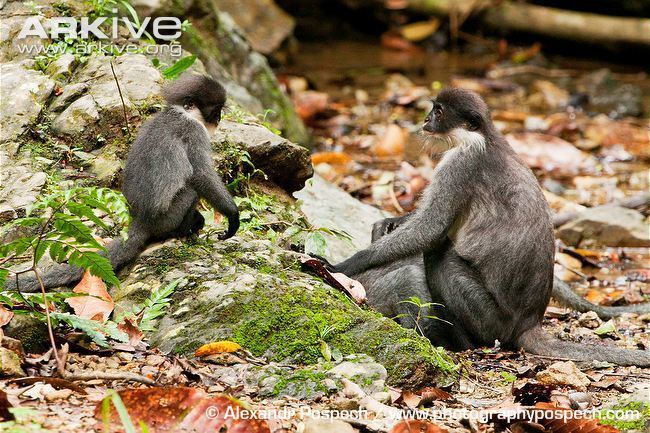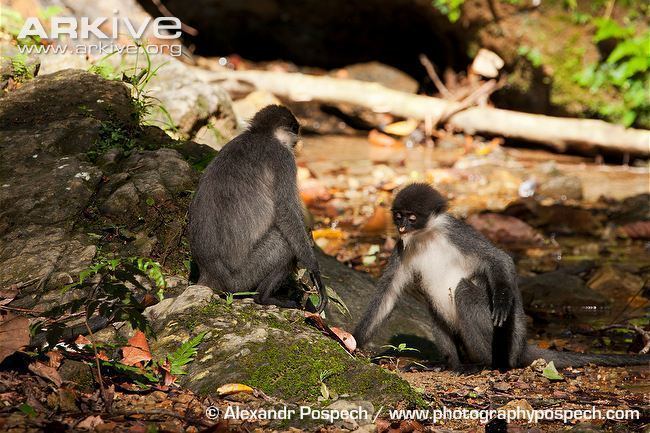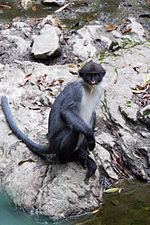Genus Presbytis Higher classification Surili | Phylum Chordata Family Cercopithecidae Scientific name Presbytis hosei Rank Species | |
 | ||
Similar Banded surili, Southern plains gray langur, Surili, Maroon leaf monkey, Sarawak surili | ||
Hose's langur (Presbytis hosei) is a species of primate in the family Cercopithecidae. It is endemic to the island of Borneo, including Brunei, Kalimantan (Indonesia), and East Malaysia. Its natural habitat is subtropical or tropical dry forests. It is threatened by habitat loss. It was first identified in Kutai National Park and Sangkulirang Peninsula, East Kalimantan, Indonesia, in 1985.
Contents

Miller's grizzled langur, a subspecies, is very rare and had been thought to be extinct, until the press announced in January 2012 its "rediscovery". Populations of Miller's grizzled langurs were first described in Kutai National Park and Sangkulirang Peninsula, East Kalimantan, Indonesia, in 1985.
In the past these primates had been hunted for their meat and occasional bezoar stones. Together with loss of natural habitats these populations have declined.

An international team of scientists from Indonesia, the United States, Canada, and the Czech Republic, have studied this new population and published their findings in the American Journal of Primatology.

Scientists had set up time-lapse recording equipment in the Wehea forest of the eastern tip of Borneo island, in June 2011. They discovered in over 4,000 of their images the primate, which was so rare it took efforts for the scientists to verify from old pictures what they had discovered. This area of forest is apparently outside of the primates' previous known range, being north-eastern part of Borneo, as well as the islands of Sumatra and Java and the Thai-Malay peninsula.

Subspecies

Threatened extinction
In 1996, the Hose’s langurs of East Kalimantan, Indonesia, were among the most common primates in the area. In 2003, the population densities of the Hose's langurs have decreased from 50-80% over the seven-year span. The sudden drop in population arises from the rising demand for its bezoar stones and to prevent crop-raiding, and the rapid deforestation and removal of the primate's habitat.
Densities of Hose's langurs positively correlate with tree height, height of the first bough, tree diameter, and canopy cover, and negatively with vegetation cover at low and ground level. With the constant deforestation and destruction of its habitat, the Hose's langurs continue to lose its habitat. Every known area in which the primate resides have been affected severely, with the exception of the innermost areas of forests that have been relatively untouched by humans.
Miller's grizzled langur
Presbytis hosei canicrus, or the Miller's grizzled langur, are one of the rarest primates in Borneo. With little information about it, it was thought to be extinct numerous times. In 2012, a team of international scientists rediscovered the Miller's grizzled langur in Wehea Forest in East Kalimantan, Borneo, disproving the rumors of its extinction. Limited to a geographical range from the central coast of East Kalimantan to the Kutai National Park, the species is highly regarded as an endemic and extremely vulnerable primate.
With the multiple factors such as deforestation of its habitat and its overhunting for its bezoar stones and food source, experts speculate the subspecies becoming extinct in the very near future.
